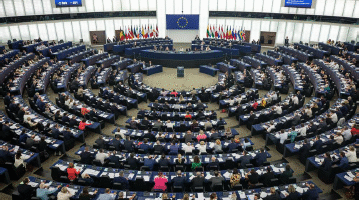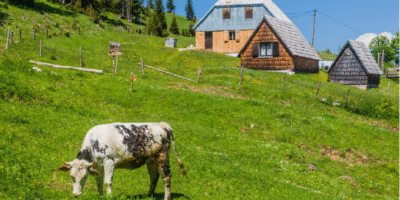Organized by the Union of WWII Veterans’ Associations (SUBNOR) and Anti-Fascists of Montenegro and the Pivljani Association in Podgorica, a commemoration was held in Doli, Piva, marking 82 years since the massacre of local civilians during World War II.
“Here we are once again in Doli, Piva a place of eternal grief, of the Piva Golgotha, a place forever echoing the cries of one of the most horrific crimes of the Second World War. It was here, on June 7, 1943, that the volunteer unit ‘Prinz Eugen’, composed of ethnic German troops and supported by the ‘Handžar Division’ and local collaborators, murdered 522 people in just one hour, including 109 children.
But we could have gathered today at any of 15 massacre sites across Piva. During those ten days of 1943, the same unit killed around 1,260 people in the Piva region 549 of them children. Every village became a killing field, and Doli was the largest,” said Professor Radovan Damjanović.
He reminded those present that the attack on Piva was a continuation of the offensive known as the Battle of the Neretva. Entire families and clans were wiped out, with not a single family spared loss. The hardest hit was the Blagojević family, which lost more than 230 members, while the Verun family was completely extinguished.
“This was a time when Piva was burning. The most vulnerable the elderly, the ill, and children unable to flee into the mountains were rounded up and locked in houses, which the fascists then set on fire. Imagine those flames, the grayish-blue smoke licking the bare hands and faces of children clinging to their mothers. One young woman, Jaglika Adžić, whom the soldiers had separated for abuse, broke free and ran into a burning house to die with her family,” said Damjanović.
The victims in Doli were divided into three groups: men over the age of 15, women and girls, and children. The killings started with the children. Only one person, Miloš Glomazić, survived the massacre; he passed away in 1986. A memorial complex was built on the site in 1977, created by sculptor Luka Tomanović.
“Today, as we walk past the shadows of the fallen, the most powerful thing we can do is remain silent. This is a place for silence, because of the pain. And I know silence will speak loudest here. Tears are the only thing that feel right. That quiet sob will surely overcome anyone who bows their head here today,” said Damjanović.
“In these three valleys, where many names remain unwritten, lie the remains of the people of Rudinice and Piva. I highlight Rudinice because the village was essentially cut in half 173 people were killed, 65 of whom are buried here.
The Bajović, Blagojević, Glomazić, Gogić, Gutović, Damjanović, Đačić, Đikanović, Jaredić, Nikolić, Popović, and Šućur families all suffered losses. The German ‘Prinz Eugen’ division tried to erase these families. The fact that 87 people were burned alive in Rudinice alone is horrifying. Could a piece of bread or a cup of buttermilk offered to the wounded and hungry really be the cause of such a tragedy?” added Šućur.
He emphasized that the fascists and Nazis in Piva murdered and burned unarmed civilians.
“Perhaps they saw these people as obstacles to their monstrous goals. But throughout history, this region has never allowed wounds to become roots of hatred. On the contrary. Just a few weeks ago, an elder from Rudinice told me how, during the war, a local man not aligned with the partisans sheltered Obren Blagojević and his sister in his home for over a week, protecting them from arrest or execution. A gesture worth remembering,” said Šućur.
He concluded by invoking Borislav Pekić’s words “Let us discover who we are” and echoed Miloš Crnjanski’s call: “We must move forward. Only those who look to the future can be truly free.”
Written by our correspondent A.A.



